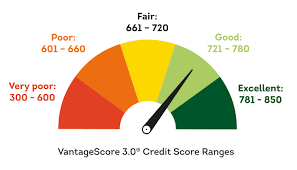Insurance Dependent Benefits: A Freelancer’s Guide to Financial Well-Being
Insurance Dependent Benefits: A Freelancer’s Guide to Financial Well-Being In the juggling act of being a freelancer or small business owner, financial turbulence can often be the unwelcome partner to your professional freedom and creativity. While the gig economy offers boundless opportunities and flexibility, it also strips away traditional employee benefits, leaving you to bear the full weight of financial security. However, there is a linchpin in the labyrinth of benefits that you may not be aware of—insurance dependent benefits. In this comprehensive guide, we’ll unravel the complex yet rewarding labyrinth of dependent insurances, empowering you to safeguard not just your personal well-being but that of your loved ones too. Understanding the Niche of Dependent Benefits At its core, dependent benefits insurance is designed to cushion the financial impact of health crises or unexpected life events that may affect your dependents, which can include your spouse, children, or elders. For you, as a small business owner or a freelancer, this translates into a powerful tool that protects the ones closest to you, while also ensuring that your business operations are not derailed by personal misfortune. Navigating the Framework of Health Insurance for Dependents The health and well-being of your family is a non-negotiable priority. If you’re a freelancer, understanding the dynamics of health insurance for your dependents is crucial. Whether it’s through a spousal insurance plan or a child-only health plan, these are tailored to meet the specific needs of each member. Depending on your income and the plans you qualify for, you can choose the coverage that fits your family’s unique health profile. The Safety Net of Life Insurance for Your Loved Ones Life insurance stands as a testament to your commitment to the future and stability of your family. By selecting the right coverage, you can leave behind a safety net for your dependents, ensuring they are financially secure even in your absence. Options range from term life insurance for a specified period to whole life insurance, which covers you for the duration of your life. Making Sense of Disability Insurance Disability insurance might not be on the forefront of your insurance checklist, but it should be. As a freelancer, your ability to work translates directly into your financial viability. In the unfortunate event of a disabling injury or illness, disability insurance kicks in to replace a portion of your lost income, preventing a financial freefall during recovery. Evaluating the Cost and Benefit Equation While the intent of dependent benefit insurances is undeniably noble, the real-world consideration often turns to cost. Is the investment in these insurances justified by the potential benefits? The answer lies in a thoughtful evaluation of your personal and professional circumstances. The Economic Realities of Adding Dependents to Your Plans One of the upfront considerations is the financial outlay of including dependents in your insurance plans. The cost will vary depending on the type of insurance, the number of dependents, and their respective needs. It’s crucial to weigh this cost against the potential expenses you might incur without adequate insurance—such as medical bills, child care costs, or end-of-life arrangements. Quantifying the Intangibles: Peace of Mind and Business Assurance Behind financial calculations are intangible values that dwarf the figures. The peace of mind that comes with knowing your loved ones are protected is priceless. Similarly, in the business context, the stability that dependent insurances provide can be the difference between thriving and merely surviving. Leveraging Tax Benefits and Incentives Don’t forget to mine the tax benefits that are tied to certain insurance schemes. Health savings accounts and flexible spending accounts can reduce your tax liability while funding your health expenditure. Additionally, certain life and disability insurances might offer tax deductions, making them not just a financial shield but also a savvy tax planning tool. Making the Right Choice for Your Unique Situation No two freelancers or small business owners are alike, and the same goes for dependents insurances. Choosing the right insurance is not about picking from a pre-set list but customizing a plan that resonates with your individual aspirations and responsibilities. Factors to Consider When Selecting a Dependents Insurance Plan When on the quest for the perfect insurance plan for your dependents, consider factors such as: Your dependents’ current and potential healthcare needs Your affordability and the value you give to each form of insurance The reputation and service quality of the insurance provider The flexibility of the plan to adapt to changes in your life or business Crafting a Comprehensive Financial Safety Net The art of insurance for freelancers doesn’t stop at one or two types. It’s a layering of different insurances that, when combined, create a comprehensive net of financial security. Consider if combining health, life, and disability insurances could offer a more robust safety net for your family and business in the long run. Periodic Review and Adjustment of Your Plans Your circumstances are not static, and neither should be your insurance plans. Commit to an annual review to ensure your dependents’ insurances align with any changes in your family, business, or the insurance market. This agility ensures that you’re always a step ahead, ready to tackle life’s uncertainties. Case Studies: Real-Life Examples of Dependent Insurance in Action Theoretical knowledge is powerful, but real-life stories resonate deeply. We bring you case studies and testimonials from freelancers and small business owners who have experienced the impact of dependent benefits insurance firsthand. By walking through their journeys, you’ll not only glean inspiration but also valuable insights into the practical application of these insurances. The Unexpected Champion: Disability Insurance Meet a freelancer who, after a severe accident, found solace in the financial support of her disability insurance. The monthly stipend ensured her expenses were met, and her business continued to operate even when she couldn’t personally manage it. The Indispensability of Life Insurance When Life Throws a Curveball A small business owner shares his heartfelt account of how life insurance was his family’s anchor after he was diagnosed with a critical illness. The







